Don't wanna be here? Send us removal request.
Photo

Roman fresco fragment
* Eisenstadt, Austria
* 2nd century CE
* Landesmuseum Burgenland
source: Wolfgang Sauber, CC BY 4.0 <https://creativecommons.org/licenses/by/4.0>, via Wikimedia Commons
368 notes
·
View notes
Text
"I grew up in an area where the remains and ruins of past civilizations and cultures have always been omnipresent. Oftentimes at night, men went to excavate the sanctuaries and the ruins to look for objects to sell. I would always hear about their stories, about their nighttime discoveries, and they surprised me. I asked myself 'What gives them the authority to do such a thing? How do they think they can do something like that?' Because you can always escape the laws of the day, but it's much harder to escape the laws of the night, of the invisible, of the sacred things."
— Alice Rohrwacher on the origins of LA CHIMERA (x)
1K notes
·
View notes
Text
we have La Chimera gay + at home

Greek Farmer Stumbles Onto 3,400-Year-Old Tomb Hidden Below His Olive Grove
The Crete local was trying to park his vehicle when he accidentally unearthed the ancient Minoan grave
Sometime between 1400 and 1200 B.C., two Minoan men were laid to rest in an underground enclosure carved out of the soft limestone native to southeast Crete. Both were entombed within larnakes—intricately embossed clay coffins popular in Bronze Age Minoan society—and surrounded by colorful funerary vases that hinted at their owners’ high status. Eventually, the burial site was sealed with stone masonry and forgotten, leaving the deceased undisturbed for roughly 3,400 years.
Earlier this summer, a local farmer accidentally brought the pair’s millennia-long rest to an abrupt end, George Dvorsky reports for Gizmodo. The farmer was attempting to park his vehicle beneath a shaded olive grove on his property when the ground gave way, forcing him to find a new parking spot. As he started to drive off, the unidentified local noticed a four-foot-wide hole that had emerged in the patch of land he’d just vacated. Perched on the edge of the gaping space, the man realized he’d unintentionally unearthed “a wonderful thing.”
According to a statement, archaeologists from the local heritage ministry, Lassithi Ephorate of Antiquities, launched excavations below the farmer’s olive grove at Rousses, a small village just northeast of Kentri, Ierapetra, in southeast Crete. They identified the Minoan tomb, nearly perfectly preserved despite its advanced age, in a pit measuring roughly four feet across and eight feet deep. The space’s interior was divided into three carved niches accessible by a vertical trench.
In the northernmost niche, archaeologists found a coffin and an array of vessels scattered across the ground. The southernmost niche yielded a second sealed coffin, as well as 14 ritual Greek jars called amphorae and a bowl.
Forbes’ Kristina Kilgrove writes that the high quality of the pottery left in the tomb indicates the individuals buried were relatively affluent. She notes, however, that other burial sites dating to the same Late Minoan period feature more elaborate beehive-style tombs.
“These [men] could be wealthy,” Kilgrove states, “but not the wealthiest.”
Unlike many ancient tombs, the Kentri grave was never discovered by thieves, Argyris Pantazis, deputy mayor of local communities, agrarian and tourism of Ierapetra, tells local news outlet Cretapost. In fact, the site likely would have remained sealed in perpetuity if not for the chance intervention of a broken irrigation pipe, which watered down the soil surrounding the farmer’s olive grove and led to his unexpected parking debacle.


“We are particularly pleased with this great archaeological discovery, as it is expected to further enhance our culture and history,” Pantazis added in his interview with Cretapost. “Indeed, this is also a response to all those who doubt that there were Minoans in Ierapetra.”
According to Archaeology News Network, most Minoan settlements found on Crete are located in the lowlands and plains rather than the mountainous regions of Ierapetra. Still, a 2012 excavation in Anatoli, Ierapetra, revealed a Minoan mansion dating to between 1600 and 1400 B.C., roughly the same time period as the Kentri tomb.
This latest find offers further proof of the ancient civilization’s presence—as Mark Cartwright notes for Ancient History Encyclopedia, the Minoans are most renowned for their labyrinthine palace complexes, which likely inspired the classic Greek myth of Theseus and the Minotaur. According to legend, Queen Pasiphae of Crete gave birth to the Minotaur, a fierce half-man, half-bull hybrid, after falling for a bull sent to Earth by the Greek god Zeus. The Minotaur, doomed to an eternity spent wandering the halls of an underground labyrinth and killing anyone it encountered, was eventually defeated by the demigod Theseus, who relied on an enchanted ball of thread provided by the king’s daughter, Ariadne, to escape the maze.
Much of the Minoans’ history remains unclear, but Forbes’ Kilgrove reports that natural disasters, including the eruption of the Thera volcano, an earthquake and a tsunami, contributed to the group’s downfall, enabling enemies such as the Mycenaeans to easily invade. Analysis of the excavated Kentri tomb may offer further insights on the Minoan-Mycenaean rivalry, as well as the Cretan civilization’s eventual demise.
By Meilan Solly.
(Discovered in Summer 2018)

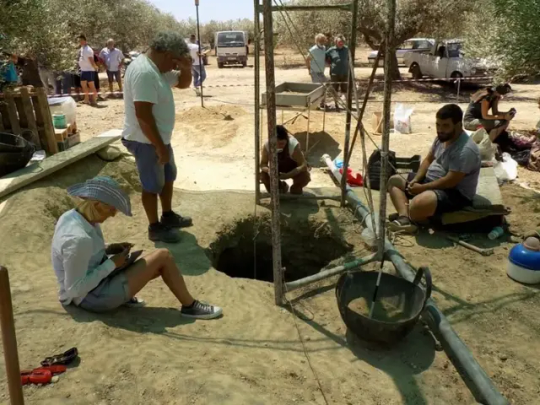
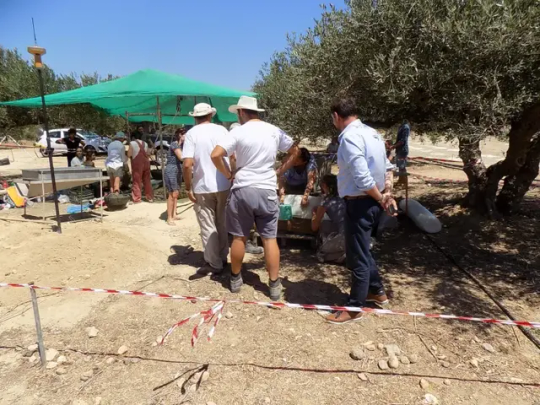
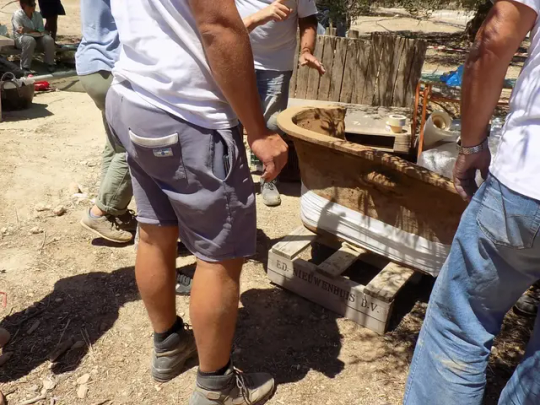
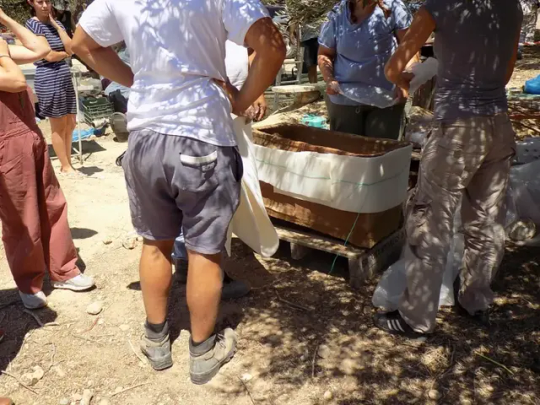
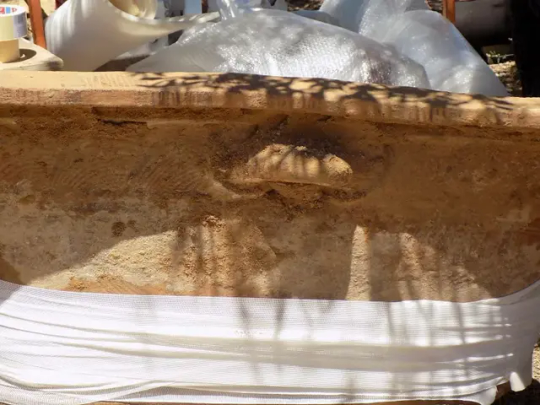
416 notes
·
View notes
Text

EtruscanCulture VII Century BC, an extraordinary Bronze Sculpture of a mythological Siren, from the ancient Necropolis of Strozzacapponi, Perugia, Umbria, Italy.
4K notes
·
View notes
Text





Dancing figures from Etruscan tomb frescoes.
733 notes
·
View notes
Text










The gorgeous Bird Mosaic from the so-called House of the Birds in Italica, Spain, features 35 different species of birds.
4K notes
·
View notes
Text
everything in this life is temporary. except that fandom hyperfixation from when you were 14. that thang will be with you forever there's no escaping.
51K notes
·
View notes
Text
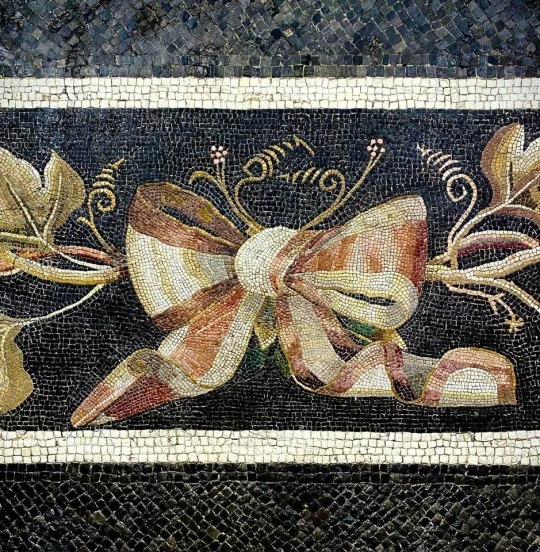
... mosaic ...
Roman mosaic, Detail of floor, 1 century BC, National Archaeological Museum of Aquileia, Italy
823 notes
·
View notes
Text

Painting of Selene - From Pompeii, about 1st century BCE, at the Archeological Nazionale Museum, Napoli.
300 notes
·
View notes
Photo
we love some hippie fashion of the 1960

Bracelets of Queen Hetepheres I, Old Kingdom, 4th Dynasty, ca. 2575-2550 BC. From the Tomb of Hetepheres I., Egypt, [960 x 860]
2K notes
·
View notes
Text



Byzantine Mosaic Panel of Hermes
Origin: Mediterranean Circa: 5th Century AD to 6th Century AD Dimensions: 69" Height x 39" Width (175 cm. x 99 cm) Medium: Marble
See More
338 notes
·
View notes
Text

"Jordi Savall directs Le Concert des Nations, La Capella Reial de Catalunya and the leading soloists of early opera in a beautiful period production of Monteverdi's favola in musica staged at Barcelona's Gran Teatre del Liceu in 2002. Gilbert Deflo's stage direction reflects the sublime art and imagery found in Mantua's Palazzo Ducale, with its famous Hall of Mirrors, where the opera was first performed in 1607."

Composer : Monteverdi, Claudio Giovanni Antonio (1567–1643)
Works : Monteverdi - L'Orfeo
Conductors : Jordi Savall
Orfeo : Furio Zanassi
La Musica : Montserrat Figueras
Euridice : Arianna Savall
Messagiera : Sara Mingardo
Speranza : Cecile van de Sant
Caronte : Antonio Abete
Proserpina : Adriana Fernandez
Plutone : Daniele Carnovich
Apollo : Fulvio Bettini
La Capella Reial de Catalunya
Le Concert des Nations
Recorded live 31 January 2002, Gran Teatro del Liceu, Barcelona
11 notes
·
View notes
Text


Mosaic floor from a villa in Baiae, an ancient Roman luxury town which was submerged centuries ago due to volcanic activity in the area.
Photos: © Edoardo Ruspantini


The Campi Flegrei Archaeological Park. World Heritage Site
2K notes
·
View notes
Text

Europa kidnapped by Jupiter disguised as a bull. Fresco from the House of Jason, Pompeii. Archaeological Museum of Naples, Italy.
671 notes
·
View notes
Text
Tar (2022) was bad. that's it. and no, Todd Field, when you put your thoughts and experiences into Cate Blanchett's mouth you're not making it sound any better. sorry.
0 notes
Photo

Female shaman burial with antlers in Siberia, 20th century CE (Bogoraz 1939, Table II, Fig. 2).
‘Shaman’ burials in prehistoric Europe. Gendered images? by Nataliia Mykhailova
230 notes
·
View notes
Text
something about the sound design of Alice Rohrwacher movies is so special and I can’t rly explain it but it makes the world of the movie come alive in such an enchanting way. it’s just such a clever stylistic choice
15 notes
·
View notes